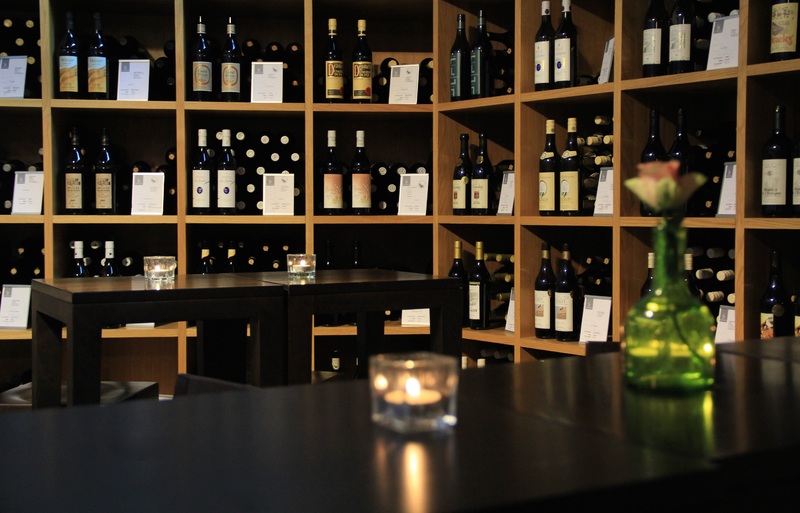
The fact that certain wines must be stored in a particular manner is common knowledge, however, very few people understand the intricacy and nuance of properly storing a bottle of wine and the importance it has on its development.
It is important to establish that all wine is perishable. It does not have a high enough alcohol content to be preserved indefinitely like its spirited cousins' whiskey and vodka. Although some can mature for up to 100 years, most wines, roughly 95%, are “ready to drink” meaning they are manufactured for immediate consumption and will not improve with age.
In fact, they often have a best before date that can be measured in months and will maintain their quality for even less than this if stored in subpar conditions. Remember, any and all wine will be ruined within a matter of hours if stored in extremely poor conditions i.e. left in the car or next to a hot stove.
Storage Needs For “Ready to Drink” Wine
Firstly, “ready to drink” wine is not indicative of poor quality, there are many extremely high quality and expensive “ready to drink” wines that are not designed to age well. With that in mind, if you only plan on keeping wine for a short period of time, specific storage parameters are not an issue. However, if you do not plan on immediate consumption then “ready to drink” wines can be safely stored for 8 to 12 months without sacrificing any quality, as long as the following requirements are met.
The wine must be:
- Stored between 4°c - 18°c.
- In an area, the temperature does not fluctuate more than 3°c.
- Kept at a relative humidity level greater than 50% and lesser than 80%.
If stored outside of these parameters, all wine is subject to spoiling or at least passing its peak consumption quality. With that covered, lets now assume you're interest in becoming a collector or enthusiast of fine wines and do not want to invest in professional-grade storage. How should your wine be stored?
Where is the Best Place to Store Wine?
First and foremost, lets quickly cover where not to store wine. Any place with poor temperature control is immediately a no go. Included in this are areas such as the kitchen or laundry room because they are often far too warm, as well as, places like the garage where in winter months the temperature can often fall below 0°c and therefore would be inhospitable for any wine.
The basement is usually the most suitable option for wine storage; however, we understand many do not have a basement that can be converted into a wine cellar in their homes. A wardrobe or cupboard can potentially act as makeshift wine storage, although it can be a lot more difficult to regulate the environment in comparison to a purpose-built cellar.
Parameters for Storing Wine
There are 6 factors to take into account when regulating an area for wine storage, these include;
- Temperature
- Temperature Stability
- Light
- Humidity
- Vibration
- Position
Storage Temperature for Wine
Heat is one of the main deciding parameters that affect the quality of ageing wine. If the ambient temperature reaches 21°c, then your wine will begin to age too quickly. Furthermore, if the temperature continues to rise your wine can literally be “cooked”, spoiling the bottle and leaving you with flat flavours and aromas. Ideally, wine should be stored between 7°c and 18°c, most rooms in your home are likely this temperature anyway. Just ensure the wine is away from any heat sources such as radiators, and equally away from areas prone to drafts i.e. near a window.
Wine Temperature Stability
Of equal if not more important than temperature, is temperature stability. Maintaining a constant temperature is actually more important than the average temperature over time. Fluctuation in temperature allows oxygen to enter into the bottle, causing the wine to become oxidised. Heating will cause the wine to expand, potentially pushing the cork from the bottle or allowing the wine to seep out through the cork. Cooling causes the wine to contract, drawing oxygen into the bottle and causing the wine to oxidise. Wines that have undergone multiple cycles of the temperature increasing and decreasing will lose their freshness and eventually spoil entirely. In order to avoid this, ensure the temperature does not fluctuate more than 1.5°c, any more than this can be extremely damaging if it occurs on a daily basis.
Lighting for Wine
The UV rays from sunlight can cause wine to degrade very quickly as it causes wine to age much faster than it should. Proper lighting conditions are of the utmost importance when storing wine for extended periods of time. Even fluorescent lightbulbs emit a small amount of UV rays, not enough to damage the wine as the tint of the bottle should protect it but definitely enough to fade the label if stored in this condition for a long time. Wine should be stored in a dark place, avoid allowing it to sit in sunlight entirely.
Wine Humidity
Similarly, to temperature stability, if the environment becomes too dry air will pass through the cork as it begins to dry out. This will cause the similarly undesirable effect of the wine oxidising. Wine being in a particularly damp environment should not do any damage, if the wine is sealed properly, however, may cause damage to the label. The ideal relative humidity level is between 50% - 80%, with 70% being widely accepted as the ideal level. Humidity can be extremely difficult to control and is only crucial when storing wines for extended periods of time. In the long term, it is best to invest in a cellar with proper temperature and humidity control.
Wine Storage Vibration
When wine is shaken excessively it causes the fermentation process to speed up, as well as, disturbing the wines sediment. This prevents the sediment from settling and can result in an unpleasant and gritty bottle. In order to avoid this, store wine away from any large electrical goods with moving parts such as washing machines. This would only become a problem when storing wine in the long term, short term storage should not be an issue.
Wine Storage Position
Traditionally, wine bottles have always been stored on their sides. Not only is this a space-efficient way of storing bottles, but it also keeps liquid up against the cork theoretically stopping it from drying out. However, if you plan on drinking your wine in the short to midterm or your bottle has an alternate closure like a screw cap, this is unnecessary. We also suggest that wine be stored upright for a few days before consumption in order to let any sediment fall to the bottom of the bottle.


